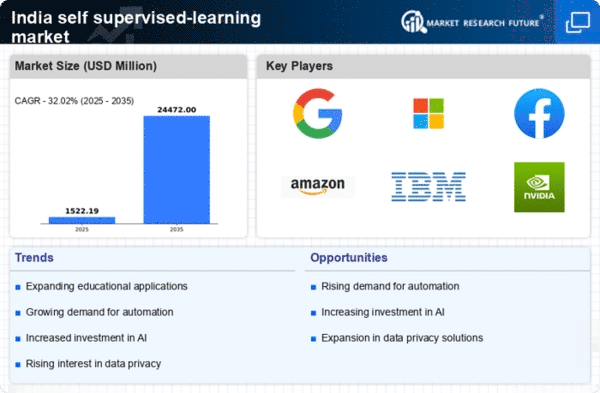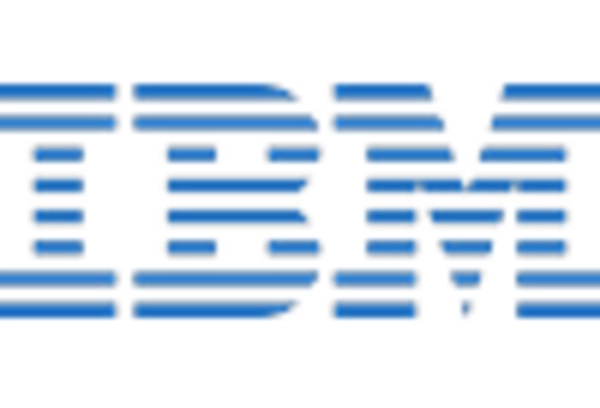Government Initiatives and Support
The Indian government is actively promoting AI and machine learning initiatives, which significantly impacts the self supervised-learning market. Various policies and funding programs are being introduced to foster research and development in AI technologies. For instance, the National AI Strategy aims to position India as a leader in AI by encouraging startups and established companies to explore self supervised-learning techniques. This governmental support is likely to create a conducive environment for innovation, leading to increased investments in self supervised-learning solutions. Furthermore, the government's focus on digital transformation across sectors, including healthcare, agriculture, and education, is expected to drive the demand for self supervised-learning applications, thereby enhancing the overall market landscape.
Rising Adoption of AI Technologies
The self supervised-learning market in India is experiencing a notable surge. This surge is due to the increasing adoption of artificial intelligence (AI) technologies across various sectors. Organizations are recognizing the potential of self supervised-learning to enhance their AI capabilities, particularly in data-rich environments. As businesses strive to improve operational efficiency and decision-making processes, the demand for self supervised-learning solutions is expected to grow. According to recent estimates, the AI market in India is projected to reach $7.8 billion by 2025, indicating a robust growth trajectory. This trend suggests that companies are likely to invest more in self supervised-learning methodologies to leverage the vast amounts of unlabeled data they possess, thereby driving innovation and competitive advantage in the self supervised-learning market.
Growing Data Generation and Availability
The exponential growth of data generation in India is a critical driver for the self supervised-learning market. With the proliferation of IoT devices, social media, and digital transactions, vast amounts of unlabeled data are being produced daily. This data presents a unique opportunity for organizations to implement self supervised-learning techniques, which can effectively utilize this data without the need for extensive labeling. Reports indicate that India is expected to generate 2.3 zettabytes of data by 2025, highlighting the immense potential for self supervised-learning applications. As businesses seek to harness this data for insights and predictive analytics, the self supervised-learning market is likely to witness substantial growth, driven by the need for efficient data processing and analysis.
Emergence of Startups and Innovation Hubs
The self supervised-learning market in India is witnessing a vibrant ecosystem. This ecosystem consists of startups and innovation hubs dedicated to advancing AI technologies. These startups are focusing on developing novel self supervised-learning algorithms and applications tailored to local market needs. The presence of incubators and accelerators is fostering collaboration between academia and industry, leading to innovative solutions that address specific challenges faced by businesses. As these startups gain traction, they are likely to contribute significantly to the growth of the self supervised-learning market. Furthermore, the increasing availability of venture capital funding for AI-focused startups indicates a strong belief in the potential of self supervised-learning to transform industries, thereby enhancing the overall market dynamics.
Increased Focus on Cost-Effective Solutions
In the competitive landscape of the self supervised-learning market, organizations in India are increasingly seeking cost-effective solutions to optimize their AI investments. Self supervised-learning offers a promising approach by reducing the reliance on labeled datasets, which can be expensive and time-consuming to create. As companies aim to maximize their return on investment, the adoption of self supervised-learning techniques is likely to rise. This trend is particularly evident in sectors such as finance and retail, where businesses are looking to leverage AI for customer insights and operational efficiency. The potential for self supervised-learning to deliver high-quality results with lower costs may drive its adoption, thereby shaping the future of the self supervised-learning market.

















Leave a Comment